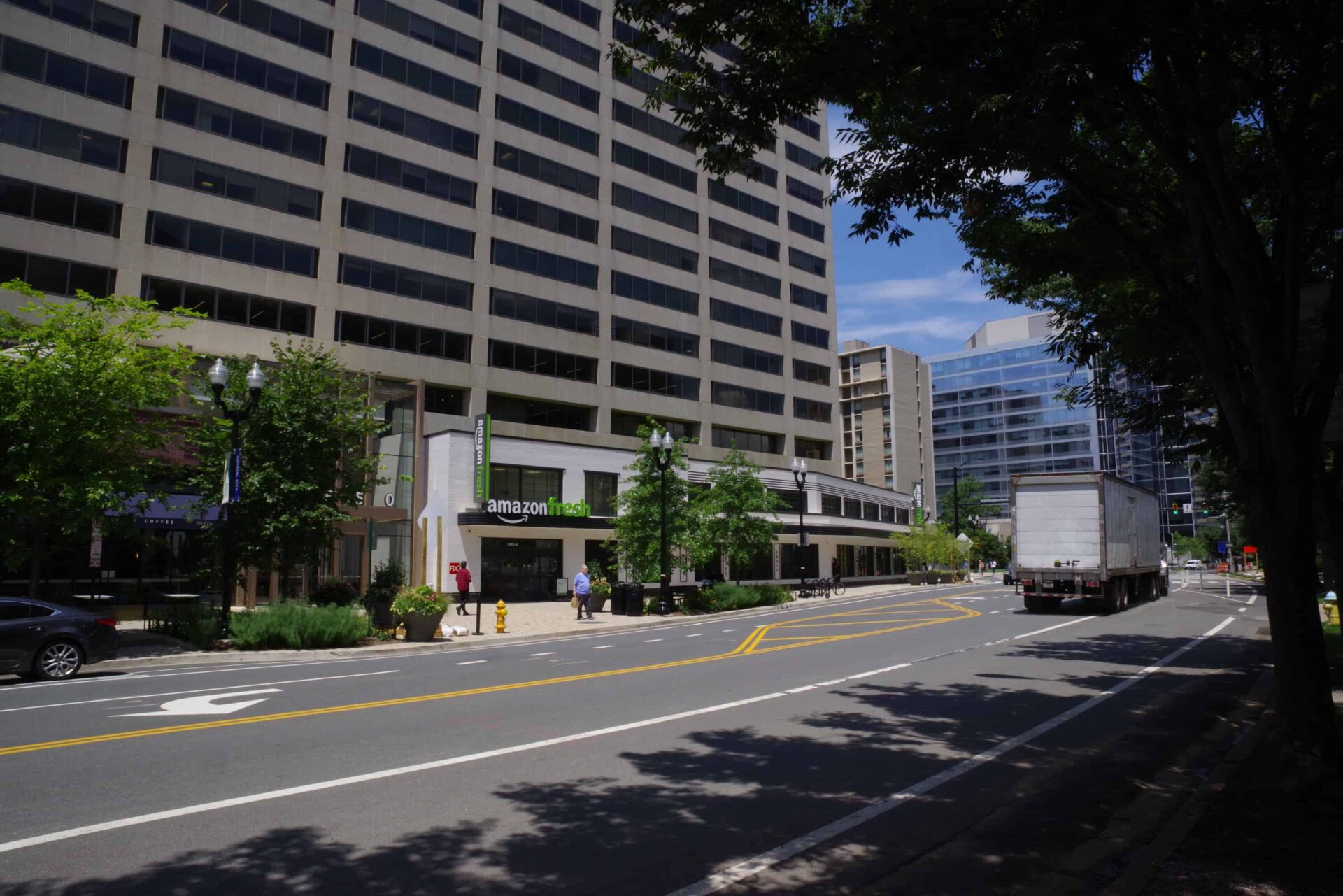

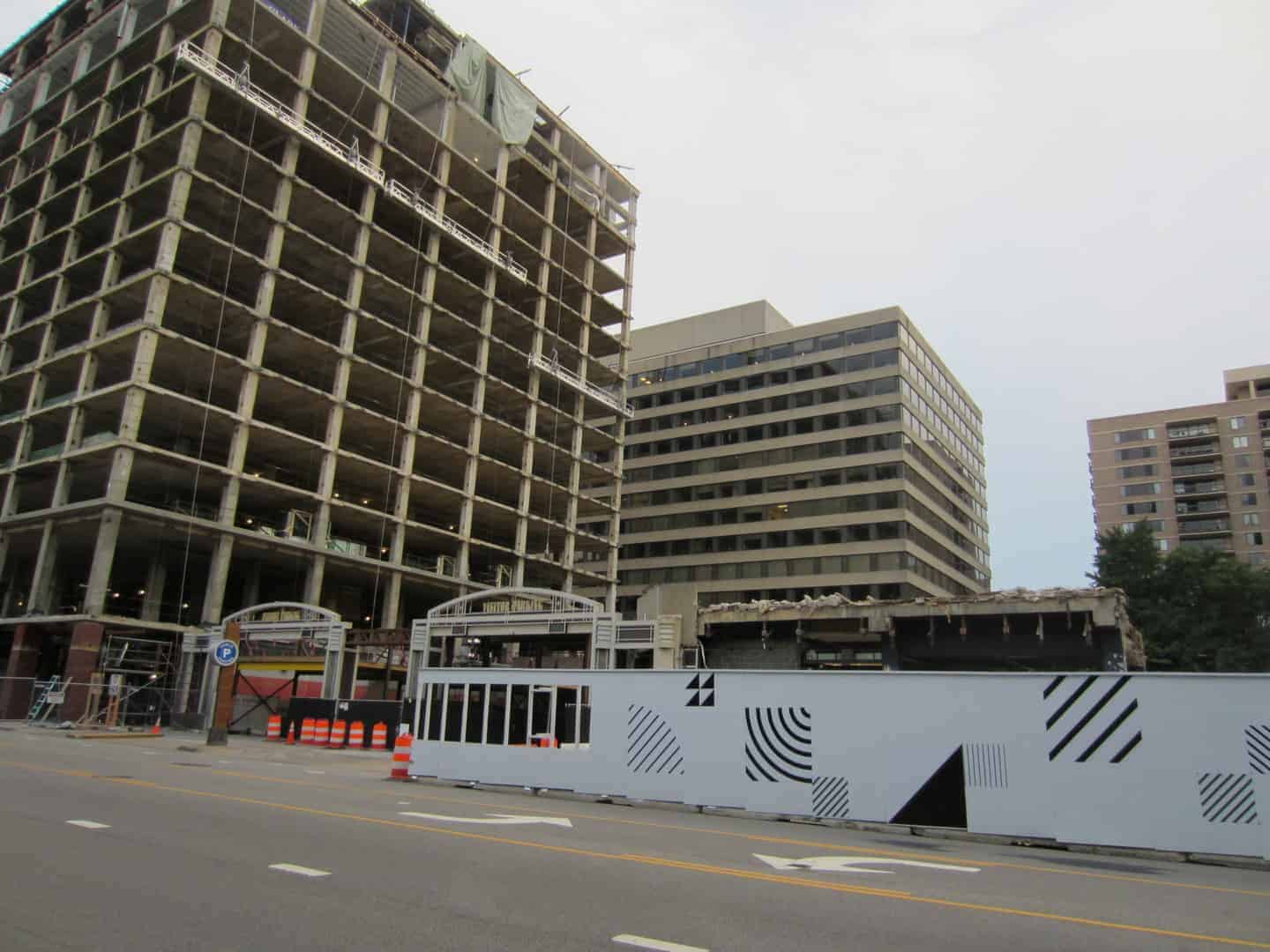
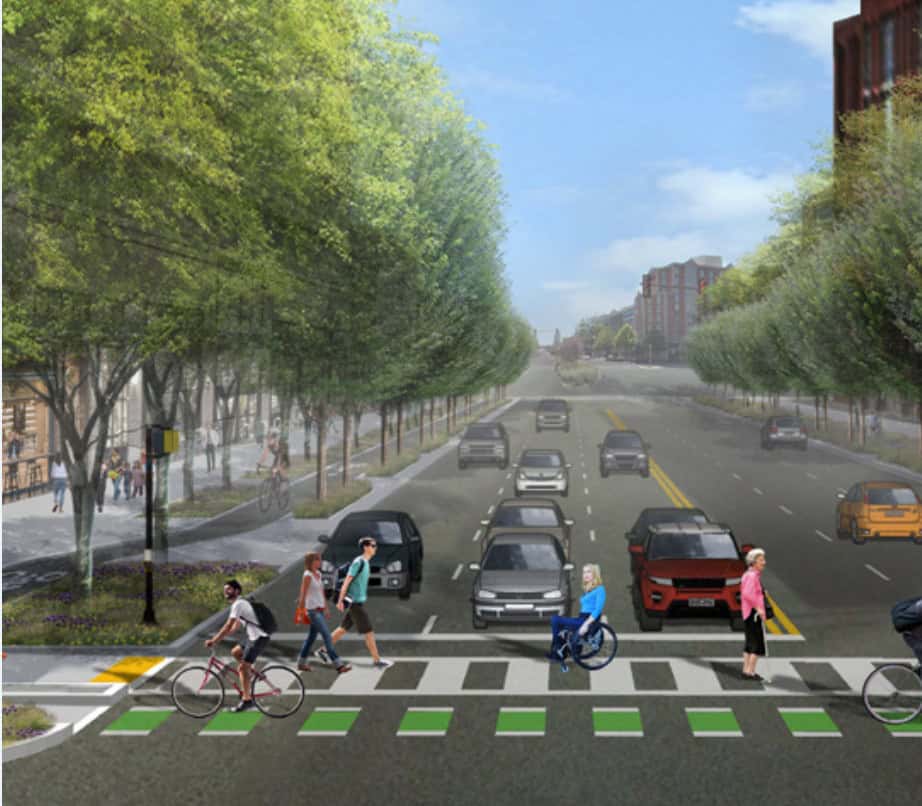

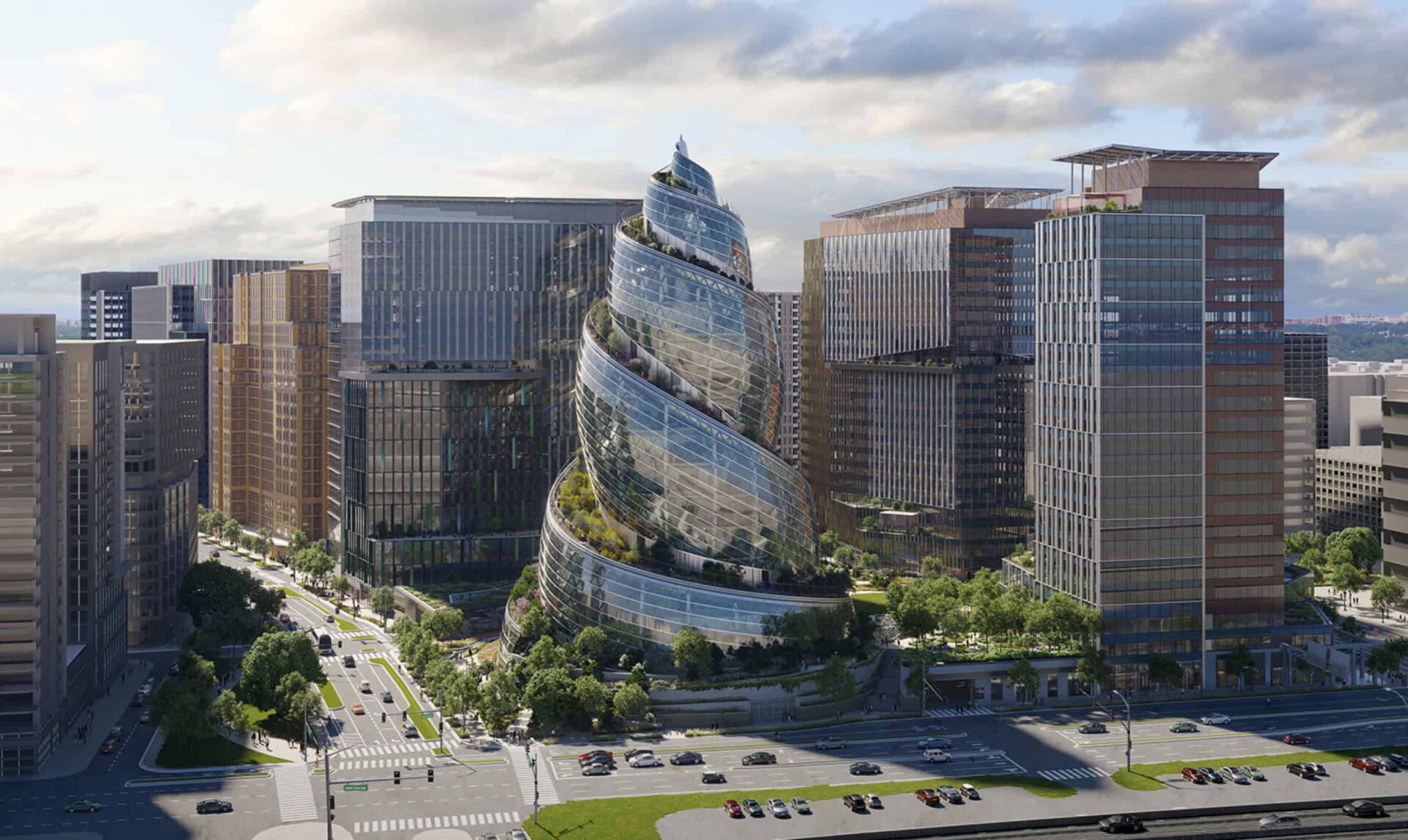
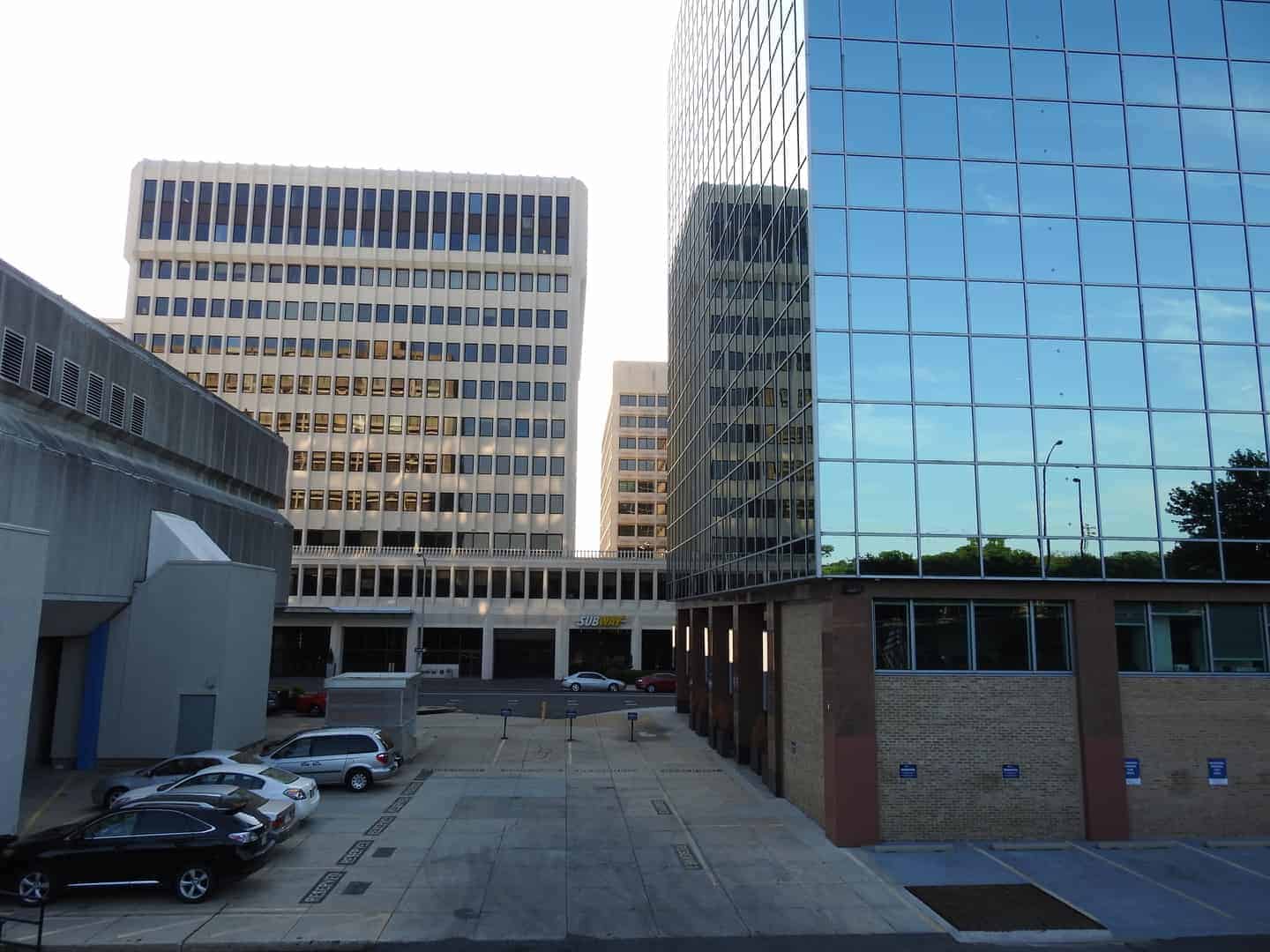
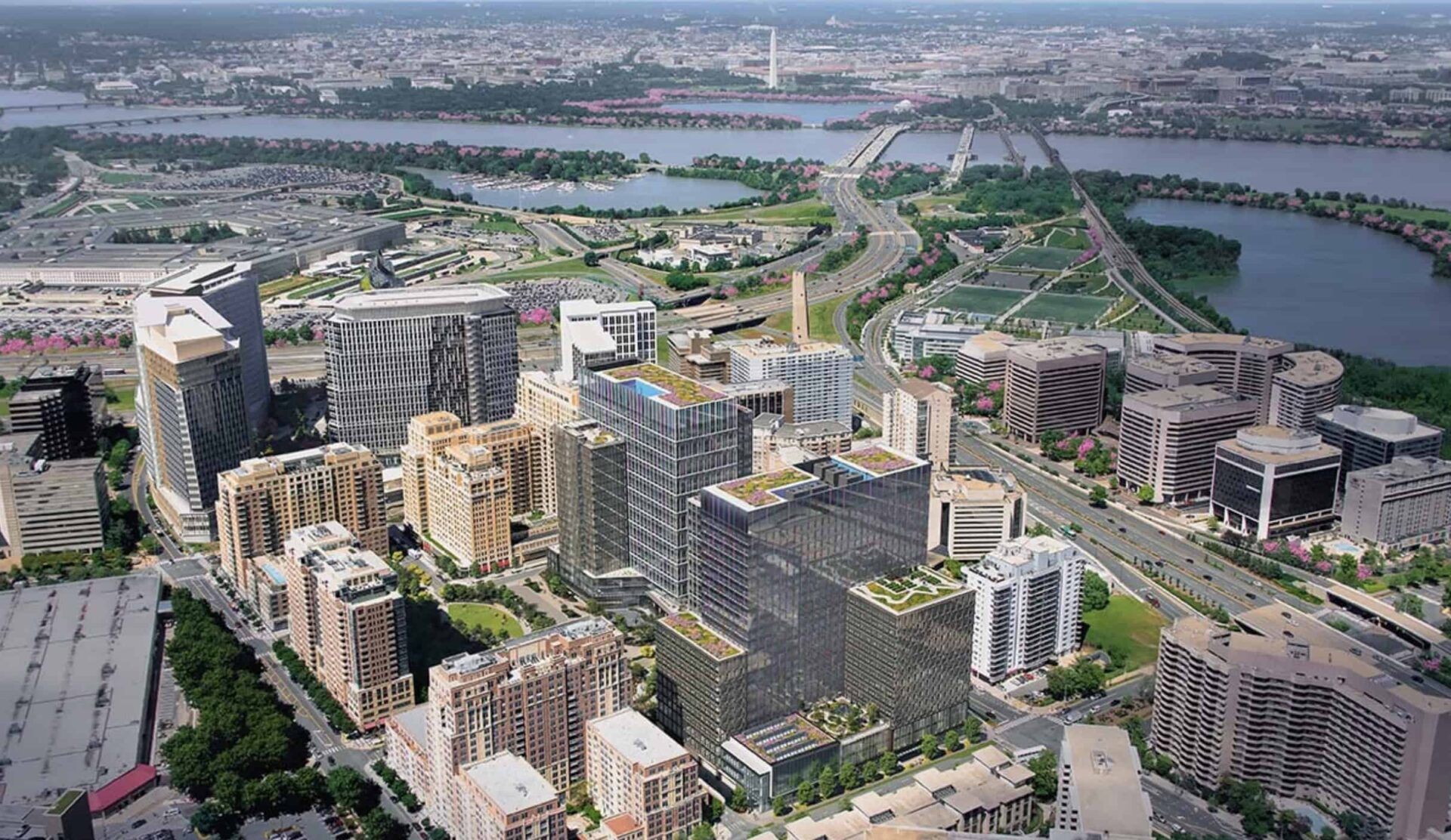
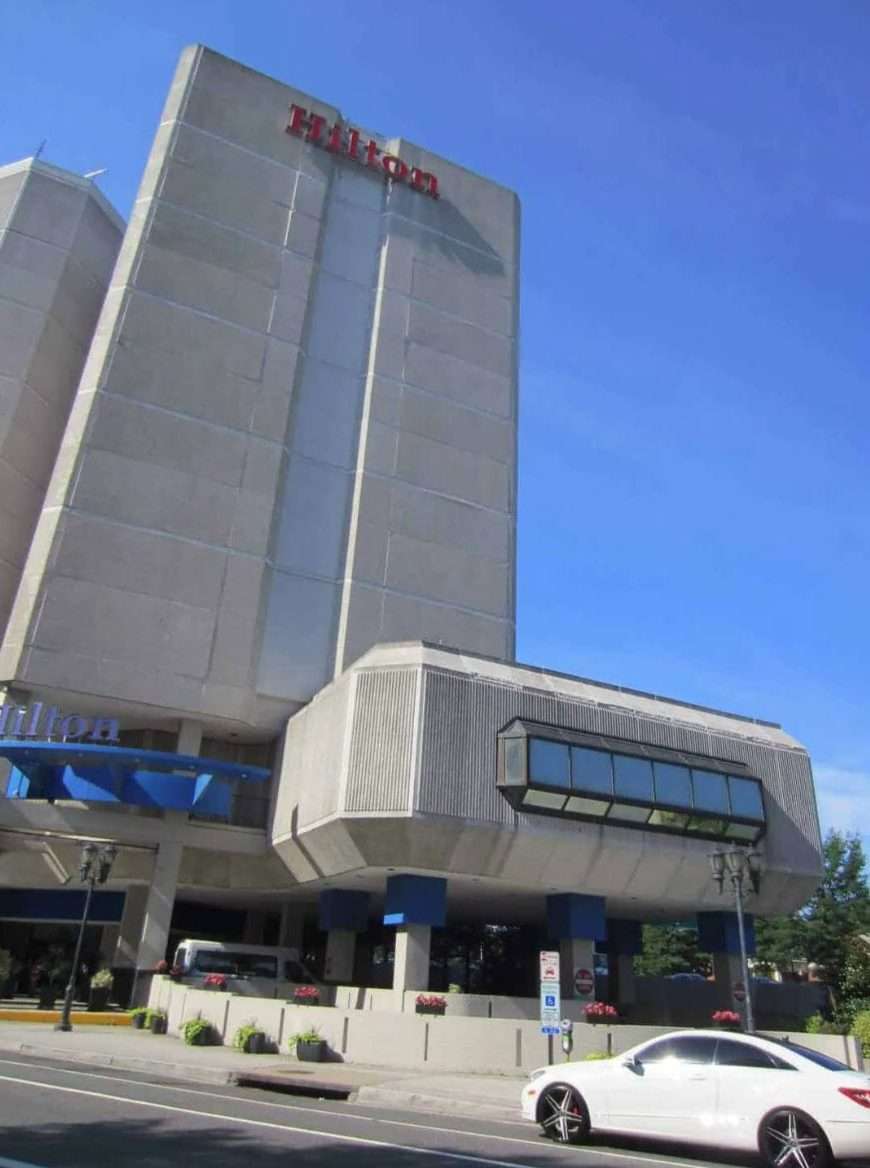
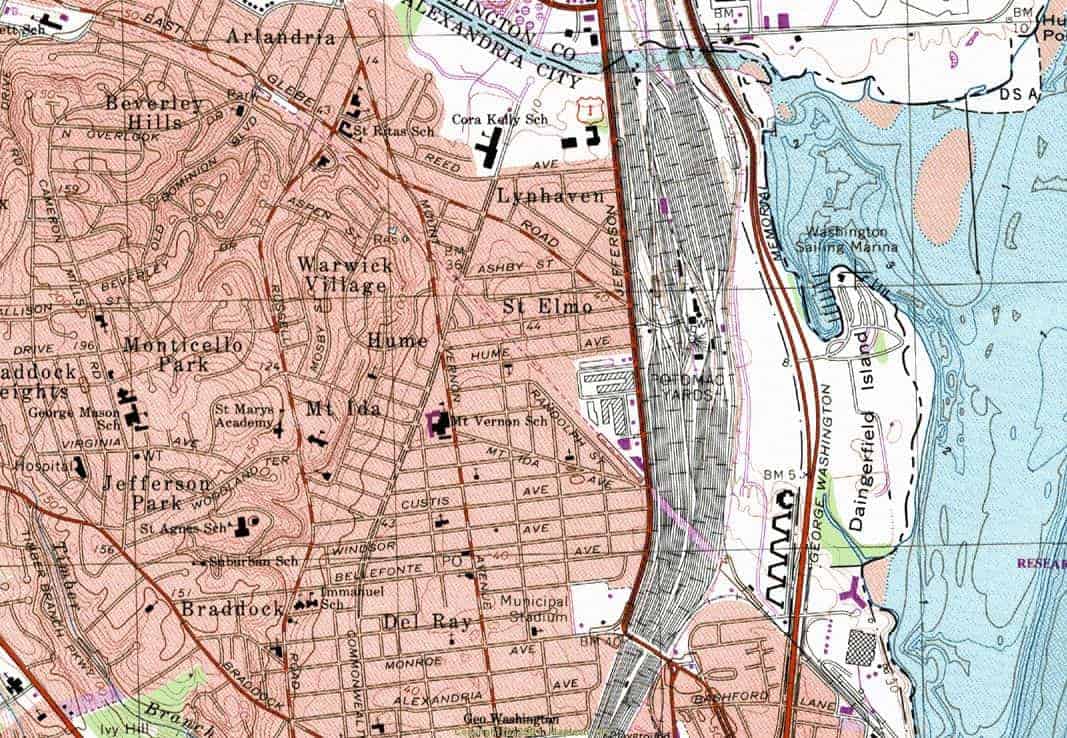
A Search for Purity in Crystal City, VA
UPDATE. August, 2024
Headwinds on the Landing Strip
On March 3, 2023, Amazon formally paused their build out of “Pen Place”, the second phase of development of Amazon’s HQ2, which was announced to great fanfare on November 13, 2018. The centerpiece of Pen Place was to be a large, elaborate, green helix shaped building. Another big part of the second phase was a radical “reimagining” for Route 1. This endeavor has also been set aside for the time being.
Not only did the pandemic change workplace patterns and reduce the demand for office space, but other headwinds have appeared since the completion of Phase 1, called “Met Park”, in June, 2023.
The Route 1 redesign is an urban planner’s wishful thinking. If you build it a certain way, people will behave differently. That’s how the thinking goes… but I think the plans for Route 1 are just spitting into a cultural headwind.
Today, Route 1 separates East from West in Crystal City like a gorge. Crossing 6 or 8 lanes of traffic is daunting. The old brutalist towers on either side of the road don’t make it any friendlier. Designers of the reimagined Route 1 envisioned a “Great Street” where people feel safe and where pedestrians take precedence over vehicular movement. But this is Northern Virginia, where roadways have historically been unable to keep up with traffic demands, despite constant road improvements. Vehicular movement is paramount on Route 1. It is an important NoVa artery that reaches its traffic capacity on a daily basis.
The designers retained the current overpass system, and hoped to soften the road into an “urban boulevard” in between elevated sections. Walking under a Route 1 overpass is hardly a friendly experience! In fact, walking across any 140’ right-of-way takes some effort and determination.
Most of the graphic depictions of the reimagined Route 1 are from the driver’s perspective, or from a birds-eye view, and not from the point of view of the pedestrian. What the pedestrian will experience when the road is finished is left to the imagination, including median “refuges” and curbs separating car and truck traffic from the bikes and scooters lane.
To their credit, the road design advocated for tech-based enforcement of traffic lights and speed limits, and nuanced traffic control that can respond to different conditions. If there’s any place that’ll support tech, it is HQ2! Speed limits would be reduced to 35 miles per hour along the “urban boulevard”.
For 60 years, Crystal City has been an apartment and condo community where people feel safe by escaping into their private residential cocoons connected to an underground garage. There were very few public amenities or cultural centers before 2018. This generational history and culture of insulation in Crystal City is treated like something that can be washed away if there are enough bike lanes, public gathering spaces, and trendy retail spaces.
“Connectivity” is a frequently used word in the “Reimagine Route 1” document from October, 2020. The cultural lifestyle in Crystal City seems as intentionally disconnected as any place that I’ve ever visited.
People like to live in Crystal City. Rising housing prices demonstrate that clearly. It offers compartmentalized bliss to many who may not want to venture out on foot to the other side of town to try out a new bistro. Not if the cost of connectivity is driving more slowly and yielding to others while getting in or out of town.
UPDATE: July 19, 2022
COVID takes it’s toll
On my first visit back since COVID, I had to wonder how the pandemic affected plans for Amazon’s HQ2. Apart from the delays caused by COVID to construction and work force, I would think that the plan for creating new office space was scaled down considerably due to more people working from home and fewer commuting to an office setting. Presumably, housing construction was accelerated to meet a larger than expected demand.
Amazon’s presence was clear in July, 2022. HQ2 is still a takeover of Crystal City and a transformation of the area into “Federal Landing”. At lunch hour, the streets and cafes were teeming with young people with bright blue lanyards holding their bright blue AZN employee ID cards. The sidewalk near the shiny new HQ building resembled a geek coders’ frat mixer.
Across the street, the Crystal City Falls park that I had covered 3 years ago was being transformed into an expanded node for mixed retail and passive recreation.
Their most public face of all is the newly opened (July 7, 2022) Amazon Fresh, on Crystal Drive. It is an ultra modern grocery store where automation means freedom, freshness and choice to those who can figure out how to make everything work. Using only your palm print, you can walk into the store, put the things you want directly into a bag or basket and after scanning your palm again, simply walk out of the store through the turnstile and your purchases are charged instantly to your credit card or bank account. Just to see what would happen, I tried paying cash for a small item. They accepted my old school payment, despite having to break open a roll of pennies and a roll of dimes in the cash drawer in order to make change! Next time through, I’ll try registering with “Amazon One” to connect my palm print to my credit card.
Shopping at Amazon Fresh does smack of that “Big Brother is Watching You” paranoia George Orwell prognosticated about in his novel, “1984”. Through cameras and sensors, your every move is covered inside the store! No stealing dirty magazines. No buying beer as a 19 year old. No nibbling at the strawberries to see how sweet they are? Are there cameras in the bathrooms? I didn’t see any… Maybe automation means the expansion of certain kinds of freedom, but closes the door on other kinds. The aisles were filled with store employees re-stocking the shelves. I wonder how long it will take before some of their jobs are filled by robots. My guess is that Amazon is working on it. This is, after all, their flagship store, and it must be cutting edge. It is like the automat at Horn and Hardart’s, 120 years later!
ORIGINAL POST– August, 2019:
Toward a Perfect Crystal
When did you last hear about an American city without a brothel? For the sake of argument, let’s include all of the Americas, not just the United States. Hmm… not on your radar? Perhaps Federal Landing should be. That’s the new name chosen to replace Crystal City when Amazon makes its move to HQ2. More about the branding effort for HQ2 here: www.citylab.com/life/2018/11/national-landing-amazon-hq2-crystal-city-northern-virginia/575848/
This is not the first name change, though. Because Crystal City, a section of Arlington Virginia didn’t get its current name until 50 years ago. The first white men took hold of the area next to the Long Bridge across the Potomac River from Washington, DC in 1835. They were investors from New York City, and their intent was to create a new port city that would spur a business and cultural renaissance in the new Capital of the nation. The waters of the Potomac were deep enough to accommodate large sailing ships, land was plentiful, and slavery was still legal in Virginia. They were fervent enough to convince the sitting President of the United States to lay the cornerstone in January of 1835. In return, the seventh President got a city named after him, Jackson City. The aspiring hamlet was not as successful Andrew Jackson’s political career, however. The area around Jackson City earned its place in history as a tawdry, seedy, lawless shantytown filled with saloons, gambling parlors, a horse racing track named for Saint Asaph and yes – lots of boudoirs.
By the 1870’s, a generation after Jackson’s death, gambling had been outlawed in DC. Jackson City became the delinquent’s destination of choice when another group of speculators, this time from New Jersey, sought to re-invent the town as a gambling resort. By 1890, the town’s nicknames had grown to include “Hell’s Bottom” and the “Monte Carlo of the East”. (Little would US citizens in 1880 believe that a future real estate speculator from New York would build the Taj Mahal Casino in New Jersey prior to his election as President!)
By the turn of the 20th Century, a backlash had begun among temperance zealots and law and order politicians. A self-proclaimed “Good Citizens’ Council” was formed, and Crandal Mackey won election as a “clean up the town” Attorney General of Alexandria County. By 1904, Mackey was leading raids with mobs of his supporters into Jackson City and nearby Rosslyn, sometimes busting up or burning the offending businesses to the ground while arresting drunken gamblers. Such was the nature of law enforcement encouraged by good citizens 115 years ago.
But the Council’s results were fleeting. By the time Prohibition ended, the area had re-sprouted its seedy side, replete with light industrial enterprises, brick yards, junkyards, used tire stores, taverns, cheap hotels, a drive-in theater, and a sprawling railroad switching yard along the tracks. The Richmond, Fredericksburg and Potomac Railroad would eventually fall on hard times. Once Interstate 95 was built across the Potomac, R,F & P passenger miles were less than 1/3rd of their 1940’s levels.
The first Crystal City apartment building in 1963 was called “Crystal House” at 1900 S. Eads Street, just west of Route 1. It boasted an elaborate, oversized crystal chandelier in the lobby. Crystal House is now a two building complex of more than 800 condominium units. It has since been joined by Crystal Gateway, Crystal Towers, Crystal Square, Crystal Plaza, and a few other high-rise gems along Crystal Drive. This branding novelty was the brainchild of Robert H. Smith, a local developer who had been able to lease much of the land to the west of the railroad from a brickworks company. Just like Jackson didn’t disagree when they named it Jackson City, Smith must have been thrilled to have the area commonly referred to as Crystal City.
The collection of office buildings, hotels and apartments grew into a canyon land of high-rises set out in in “Superblocks”, in the style of Modernist European architects and planners of the 1920’s and 30’. The concept was to have an efficient, clean, self-contained community, idealized by the TV cartoon “The Jetsons”. There was racial purity, too, at the time. From Crystal City, the wide Potomac was a welcome divide when residents considered the rank ills of the District during the 1960’s. Crystal City was built as a sanctuary, and it strove to retain its purity. Sterile was good. The style of the 1960’s and 70’s architecture in Crystal City has been described as “Brutalist” because of the large scale of the buildings, the use of underground shopping malls and pedestrian walkways, repetitive design elements, and the predominance of concrete and crushed stone as finish materials. Crystal City succeeded as the K-cup of planned communities; predictable, self-contained, safe, sanitary, unitized, and standardized. Plastic waste be damned!
Beginning with the opening of a MetroRail stop in 1977, the concrete canyons began to open to a more human scale. Natural elements were introduced into the landscape. The community became multi-cultural. Retail eventually came up to street level. New apartment buildings were curved instead of boxy. One of the biggest examples of the softer style is the new Long Bridge Park, with playing fields, a curved promenade along the remaining railroad tracks, and an aquatic center under construction. Crystal City Falls, a vest pocket park along Crystal Drive boasts a long curved water feature, lounge chairs and places to enjoy a lunch al fresco. Now when Crystal City expands, it seems to soften a little at the edges. And the opportunities for expansion were enormous at the end of the Millennium. The Potomac Yards were used for switching freight cars from one carrier to another, from electric locomotion to steam, or vice versa. The busiest year in the Yards was 1937. Business declined for two generations as market share was lost to trucks and as railroads streamlined their operations through consolidation. Finally, the Potomac Yards closed in 1989, after being identified as a toxic waste (Superfund) site in 1987. Twelve years later, the EPA declared the cleanup complete and decommissioned the Superfund site. The closure of the Yards provided another 300 acres of open ground for development just to the South of Crystal City.
The race to build on the brownfield was on. Though the ground was not pure, it was good enough. Ambitions for the immediate development of Potomac Yards were interrupted in 2005 with the release of BRAC, the Defense Base Realignment study that call for the removal of 13,000 pentagon jobs from Crystal City. The impact of BRAC on the office and housing markets eventually opened the door for Amazon HQ2 in 2017. After BRAC, there was lots of space available, and whatever additional space that would be needed could be constructed at the Potomac Yards. A utopian dream of gleaming white towers set out on a green landscape within a short commute to the city center turned out to be as fleeting as the work of the Good Citizens’ Council. Here’s the conundrum: people arrive to live and work in the new suburb with their own problems; substance abuse, physical & mental illness, financial distress, and prejudice. Eventually, human deficiencies invade the purity of the spaces where residents live and work, and the model suburb develops the same problems as the central city its residents sought to escape. In a bit of utopian denial, the insular self-sufficiency and resulting compartmentalization of the tower suburb makes the onset of many urban problems harder to detect.
Further complicating social problems is transience. Crystal City is located adjacent to Reagan National Airport. There are scores of hotels in town, catering to air travelers, tourist visitors to the District, and business people from out of town. Transience lessens opportunities for meaningful and lasting human connection, which is critical to maintaining a sense of community. There is a long history of peep shows, adult bookstores, burlesque theaters and associated behaviors near urban transportation centers. If you ever walked 42nd street in New York City, you’ll know what I mean. Bottom line, there is no running away from urban problems. They will find your city, despite the utopian claims of the prospector/developer who wants to lease you an office or sell you a condo. Urban problems must be addressed with dedication, effort, human connection, and creativity. So if anybody ever tells you about a town without a brothel, look at them skeptically and ask them if they’ve heard of Crystal City.
Peter Evans VA Arlington Aug 29, 2019 Architecture City Planning History
Like
Been there
Comment
Share
Related Experiences
Have you had an experience at this place?
Share your own experience here!
More Views For You!
Have another story to tell? Create an account and get started. It's free!



Loading Views . . .
Go on a journey through East Coast States
